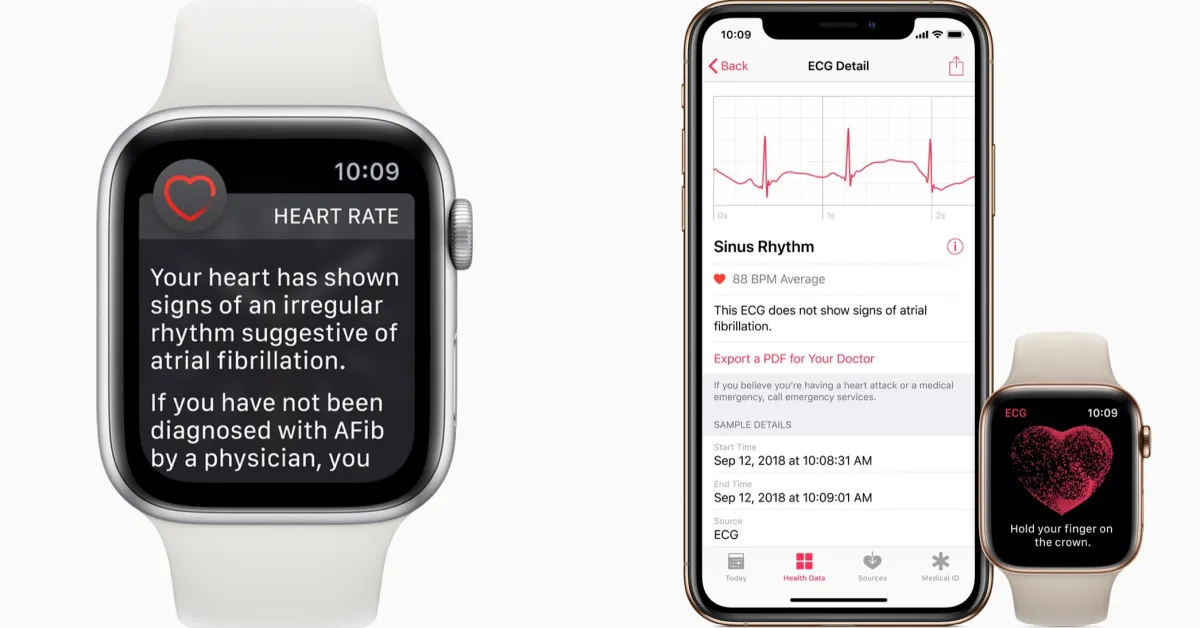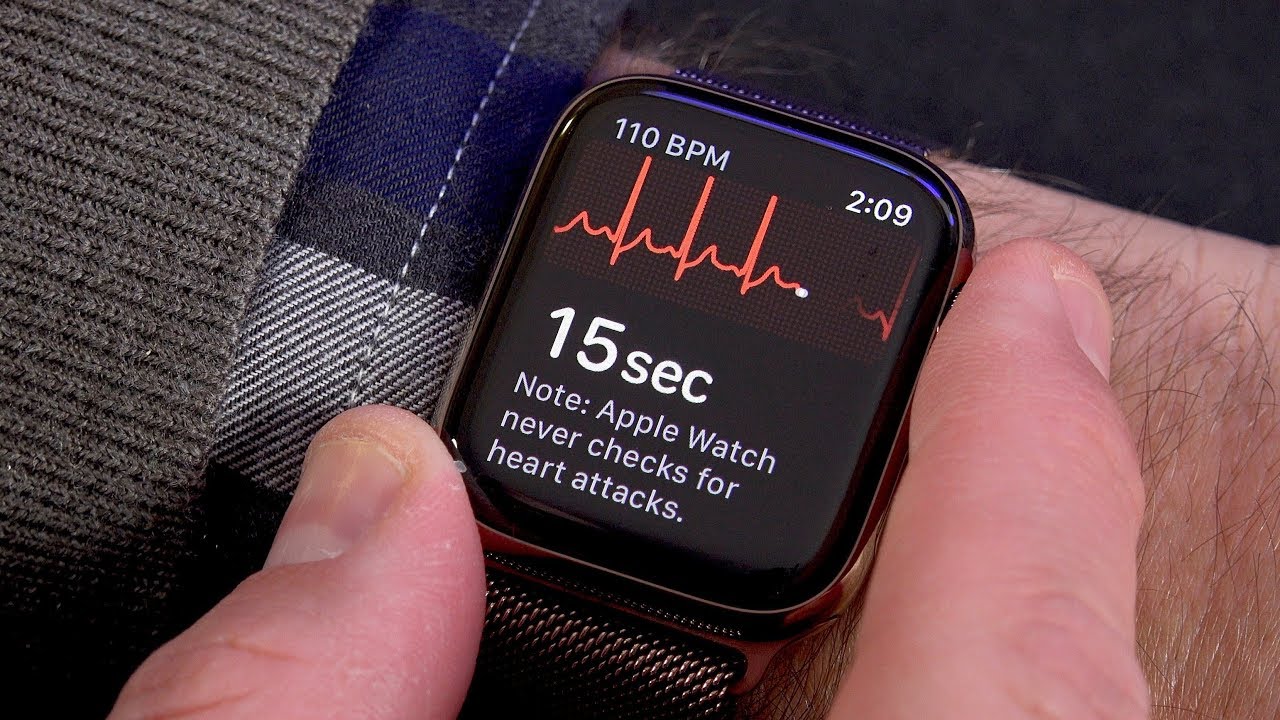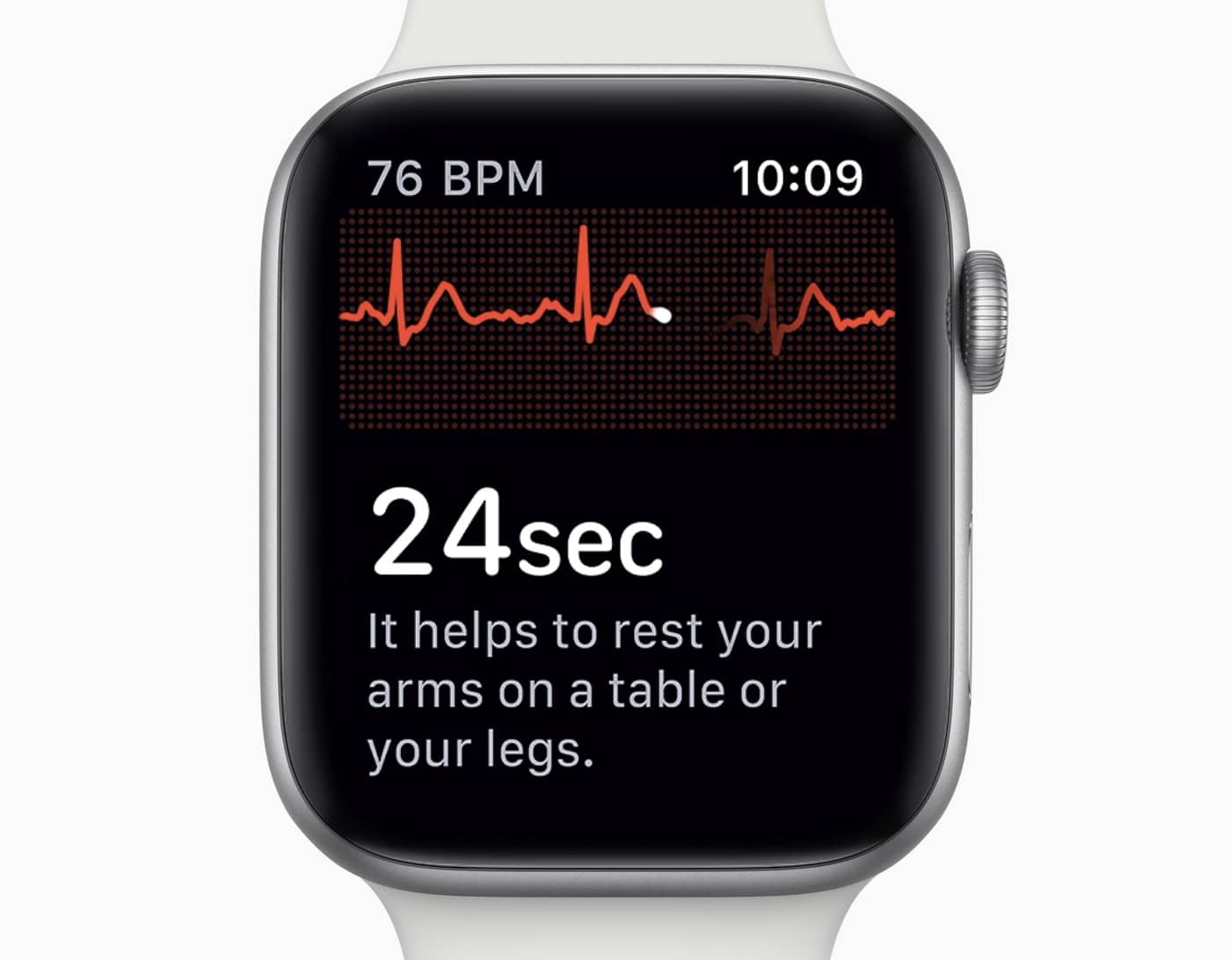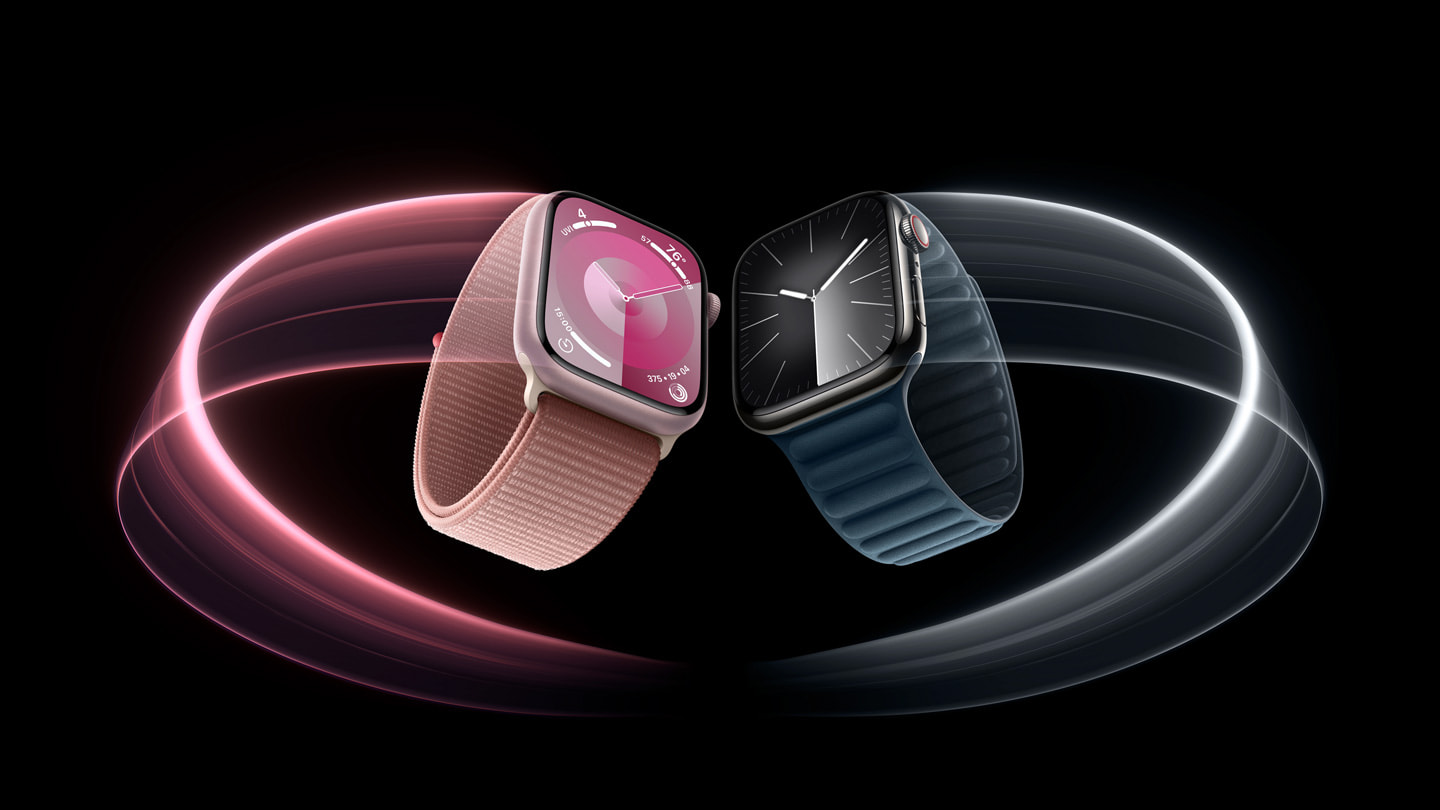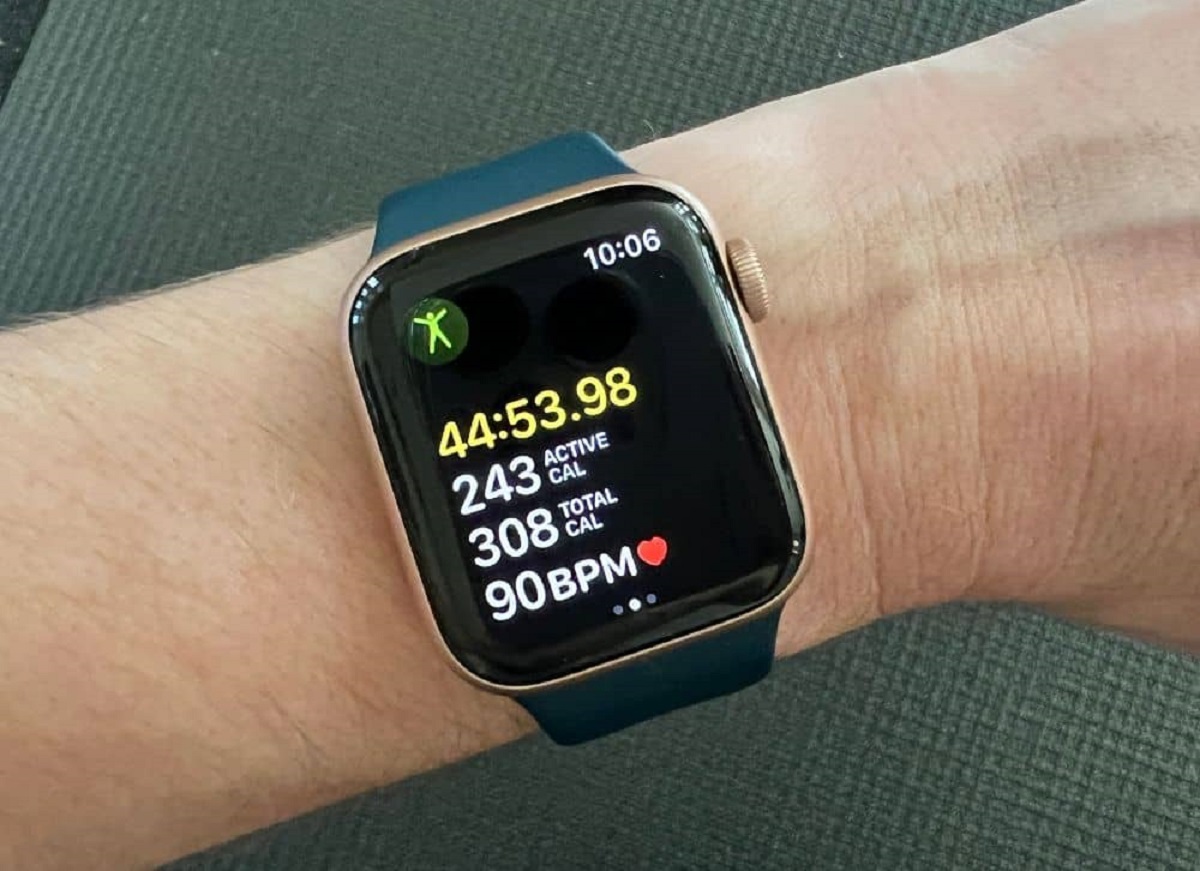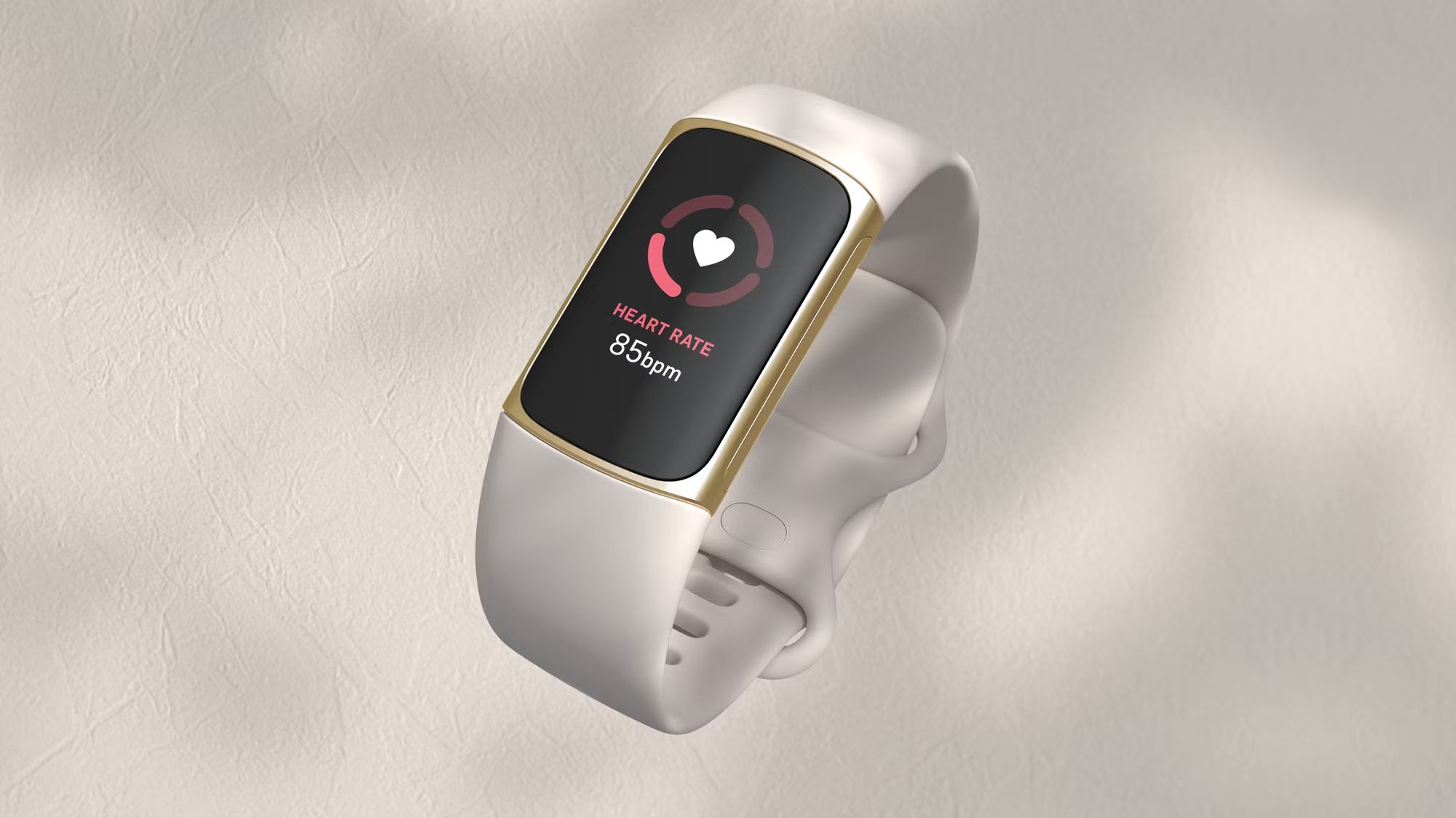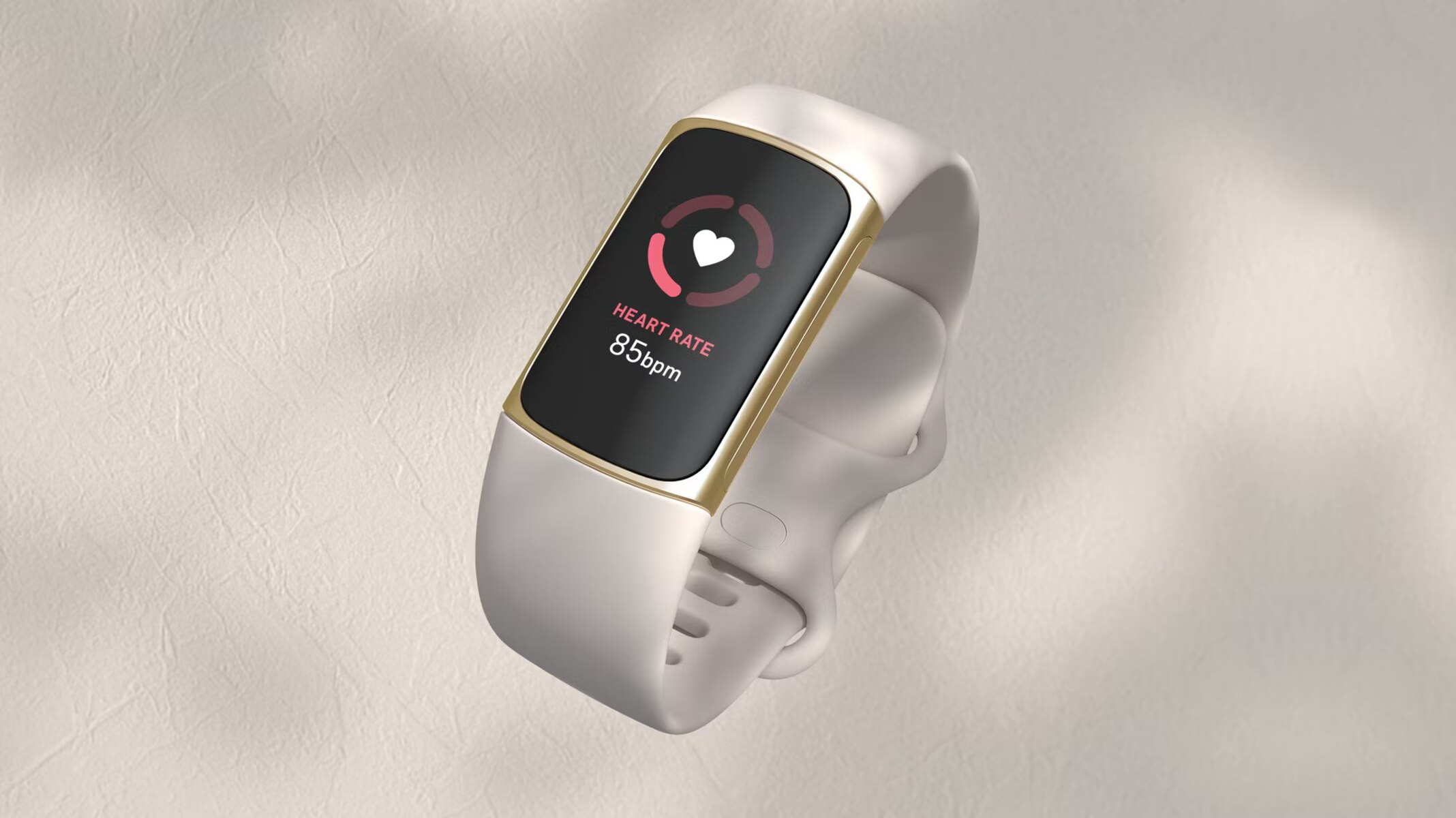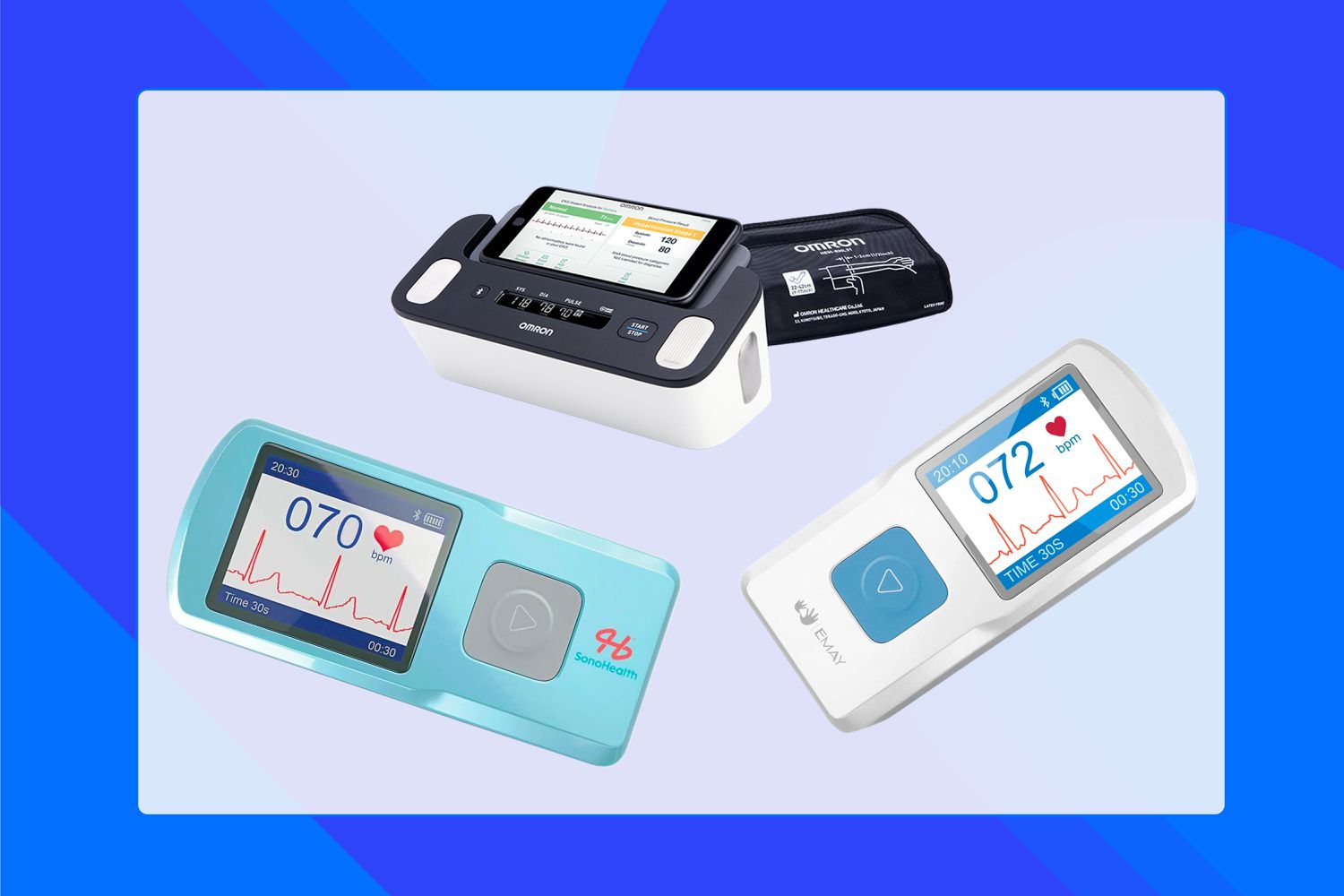Introduction
Welcome to our guide on how often the Apple Watch checks for atrial fibrillation (Afib). The Apple Watch has emerged as a popular wearable device that offers a range of health-monitoring features, including the ability to detect irregular heart rhythms. Afib, a condition characterized by irregular heartbeats, affects millions of people worldwide and can lead to serious health complications if left undiagnosed or untreated.
The Apple Watch has revolutionized the way we track and monitor our health, and its ability to detect Afib has garnered significant attention. This feature has the potential to act as an early warning system, alerting users to potential heart rhythm abnormalities and prompting them to seek medical attention.
In this guide, we will delve into the functionality of the Apple Watch in monitoring Afib, exploring how often it checks for this condition and discussing the factors that can influence the frequency of checks. We will also explore how the Apple Watch detects Afib and highlight both the benefits and limitations of this feature. Finally, we will provide some helpful tips on improving the accuracy of Afib detection using the Apple Watch.
Whether you are a proud owner of an Apple Watch or are considering purchasing one, understanding how it monitors Afib is crucial for harnessing the full potential of this wearable device in safeguarding your cardiac health. Let’s dive deeper into this exciting topic and unravel the secrets behind Apple Watch’s Afib monitoring capabilities.
What is Afib?
Atrial fibrillation, commonly referred to as Afib, is a heart condition characterized by irregular and often rapid heartbeats. Normally, the heart’s electrical signals coordinate the contractions of its chambers, allowing it to pump blood efficiently throughout the body. However, in individuals with Afib, the electrical signals become chaotic, causing the atria, the heart’s upper chambers, to quiver instead of contracting effectively.
This irregularity in heart rhythm can lead to a variety of symptoms, including palpitations, shortness of breath, fatigue, dizziness, and chest pain. In some cases, people with Afib may not experience any noticeable symptoms, making early detection and diagnosis even more crucial.
Afib increases the risk of blood clot formation, which can cause a stroke if the clot travels to the brain. It is estimated that Afib is responsible for about 15-20% of all strokes. Other serious complications of Afib include heart failure, chronic fatigue, and an increased risk of developing other heart-related conditions.
Given the potential risks associated with Afib, early detection and management are key to reducing the likelihood of complications. This is where the Apple Watch’s Afib detection feature comes into play, offering users the opportunity to monitor their heart rhythm and seek medical attention promptly if necessary.
In the next section, we will explore how the Apple Watch plays a role in monitoring Afib and detecting irregular heart rhythms.
The Role of Apple Watch in Monitoring Afib
The Apple Watch has become much more than a stylish accessory; it now serves as a powerful health companion with features designed to monitor various aspects of our well-being. Among the many health-monitoring capabilities of the Apple Watch, its ability to detect and monitor atrial fibrillation (Afib) has gained significant attention.
Apple Watch’s Afib detection feature utilizes its built-in optical heart rate sensor and advanced algorithms to analyze the wearer’s heart rhythm. By continuously monitoring the heart rate, the Apple Watch can identify irregular patterns that may indicate the presence of Afib.
Once Afib is detected, the Apple Watch promptly alerts the wearer through a notification, urging them to consult with a healthcare professional for further evaluation and diagnosis. This early warning system has the potential to lead to timely intervention and improved outcomes for individuals at risk of Afib-related complications.
In addition to detecting Afib, the Apple Watch also allows users to track their heart rate throughout the day, providing valuable insights into their overall cardiovascular health. The ability to access real-time heart rate data on the wrist empowers individuals to better understand their heart’s performance during physical activity, periods of stress, or even at rest.
It’s important to note that while the Apple Watch can help detect irregular heart rhythms and monitor Afib, it is not a substitute for professional medical advice or a diagnostic tool. However, it can serve as a valuable tool for individuals to take an active role in their cardiac health by identifying potential issues and seeking appropriate medical attention.
In the next section, we will explore how often the Apple Watch checks for Afib and the factors that can influence the frequency of these checks.
How Often Does Apple Watch Check For Afib?
The frequency at which the Apple Watch checks for atrial fibrillation (Afib) varies depending on several factors. The device is designed to monitor the wearer’s heart rhythm continuously throughout the day, providing regular updates on their heart’s performance.
Typically, the Apple Watch checks the heart rate in the background at regular intervals, even during periods of inactivity. This enables the device to detect any irregularities or signs of Afib that may arise unexpectedly.
The exact interval between heart rate checks can vary, and Apple has not publicly disclosed the specific timing. However, based on user reports and information from Apple, it is estimated that the Apple Watch measures heart rate approximately every few minutes during daily wear.
It is important to note that the Apple Watch may not detect atrial fibrillation during every heart rate check. Afib can be an intermittent condition, and its occurrence may not align precisely with the timing of the watch’s checks. Therefore, it is crucial not to solely rely on the Apple Watch as a definitive diagnostic tool for Afib.
If the Apple Watch detects an irregular heart rhythm consistent with Afib, it will trigger a notification to alert the wearer. This notification serves as an indication to consult with a healthcare professional or seek further medical evaluation. It is essential to follow up with a medical expert for a thorough examination and diagnosis.
The frequency of Afib checks by the Apple Watch contributes to its ability to provide users with real-time insights into their heart health. Monitoring heart rhythm continuously throughout the day can help identify irregularities that may otherwise go unnoticed, allowing for prompt intervention and medical attention when necessary.
Next, we will explore the factors that can influence the frequency of Afib checks performed by the Apple Watch.
Factors That Affect the Frequency of Afib Checks
Several factors can influence the frequency at which the Apple Watch checks for atrial fibrillation (Afib) and monitors heart rhythm. Understanding these factors can provide insights into the variability of Afib checks performed by the device.
1. Activity Level: The Apple Watch uses its built-in sensors to detect the wearer’s motion and activity. During periods of high activity or exercise, the device may prioritize monitoring heart rate more frequently to capture any changes or abnormalities that may be indicative of Afib. Conversely, during periods of inactivity or sleep, the Apple Watch may reduce the frequency of checks to conserve battery life and minimize unnecessary alerts.
2. Heart Rate Variability: Heart rate variability (HRV) refers to the variation in the time intervals between heartbeats. It is influenced by factors such as stress, physical exertion, and even breathing patterns. The Apple Watch takes HRV into account when monitoring heart rate and may adjust the frequency of checks based on changes in HRV. Higher HRV may prompt more frequent checks, while lower HRV may result in less frequent checks for Afib detection.
3. Battery Life: The Apple Watch’s battery life plays a role in the frequency of Afib checks. To extend battery longevity, the device may reduce the frequency of heart rate checks during periods of low battery or when power-saving mode is activated. However, it still strives to monitor heart rhythm regularly to capture any potential irregularities.
4. User Settings: Apple Watch users have the ability to customize certain preferences and settings related to heart rate monitoring. These settings may include enabling or disabling continuous heart rate monitoring, adjusting notification thresholds for irregular heart rhythms, or altering the frequency of checks. Users should review and update these settings based on their individual needs and preferences.
It is worth noting that while these factors can influence the frequency of Afib checks, the Apple Watch’s primary objective is to balance accurate heart rate monitoring with battery efficiency. Continuous monitoring throughout the day ensures that potential irregularities, including Afib, are more likely to be captured, while still providing a reliable and long-lasting device experience.
In the next section, we will explore how the Apple Watch detects Afib and identifies irregular heart rhythms.
How Apple Watch Detects Afib
The Apple Watch utilizes a combination of advanced hardware and software to detect atrial fibrillation (Afib) and identify irregular heart rhythms. Through its optical heart rate sensor and sophisticated algorithms, the device can monitor the wearer’s heart rate and analyze patterns that may indicate the presence of Afib.
When you wear the Apple Watch, the optical heart rate sensor continuously emits and detects light to capture information about the blood flow through your wrist. This data, along with the specialized algorithms developed by Apple, allows the device to calculate your heart rate and identify any irregularities.
Specifically, for Afib detection, the Apple Watch focuses on analyzing the variations and patterns in the intervals between your heartbeats. It looks for signs of irregularity that are consistent with atrial fibrillation. If it detects characteristics indicative of Afib, it will trigger a notification on your Apple Watch, prompting you to consult with a healthcare professional for further evaluation.
It’s important to note that while the Apple Watch is capable of detecting Afib, it is not infallible. Like any medical device, its accuracy has limitations. Factors such as motion artifact, poor contact with the skin, or other underlying conditions can potentially affect the reliability of the readings. Therefore, it is always recommended to consult with a healthcare professional for a definitive diagnosis if you receive an Afib notification.
Apple continues to refine and improve its algorithms to enhance the accuracy of Afib detection. The device undergoes rigorous testing to ensure its reliability and effectiveness as a health-monitoring tool, including clinical trials and collaborations with medical institutions.
The Apple Watch also allows users to manually capture an ECG (electrocardiogram) by placing their finger on the digital crown. This provides a more detailed assessment of the heart’s electrical activity and can be useful for diagnosing various heart conditions, including Afib. However, it’s important to note that the ECG feature is only available in certain models and regions.
By combining sophisticated sensors, advanced algorithms, and continuous monitoring, the Apple Watch offers users a valuable tool for detecting Afib and potentially identifying other heart rhythm abnormalities. However, it is essential to remember that the Apple Watch is not a substitute for professional medical advice, and any concerns should be discussed with a healthcare provider.
In the following section, we will explore the benefits of Apple Watch’s Afib monitoring feature.
Benefits of Apple Watch’s Afib Monitoring
The Apple Watch’s ability to monitor and detect atrial fibrillation (Afib) offers several significant benefits for users concerned about their heart health. Let’s explore some of the key advantages of using the Apple Watch for Afib monitoring:
1. Early Detection: Afib can often go undetected, as it may not present noticeable symptoms in some individuals. The Apple Watch’s Afib monitoring feature provides an early warning system, alerting users to potential irregular heart rhythms. Early detection allows for timely medical intervention, potentially reducing the risk of complications associated with Afib.
2. Convenient and Continuous Monitoring: The Apple Watch enables continuous monitoring of heart rhythm throughout the day, capturing data during various activities, including exercise, stress, and even periods of rest. This convenience and continuous monitoring allow users to have a comprehensive view of their heart’s performance and identify any potential irregularities that may require further attention.
3. Empowering Users with Knowledge: By providing real-time heart rate data and notifications for irregular heart rhythms, the Apple Watch empowers users with valuable information about their heart health. This knowledge encourages individuals to become more proactive in managing their well-being and seek appropriate medical advice when necessary.
4. Improved Engagement in Personal Health: The Apple Watch’s Afib monitoring feature encourages users to take an active role in their cardiovascular health. By regularly checking heart rate data and receiving notifications for irregularities, individuals are motivated to make healthier lifestyle choices and seek regular medical check-ups, leading to overall better heart and general well-being.
5. Peace of Mind: For individuals at risk of developing Afib or those with a family history of heart rhythm disorders, the Apple Watch’s Afib monitoring feature provides an invaluable sense of peace of mind. Knowing that their heart rhythm is being continuously monitored can alleviate anxiety and enable individuals to take proactive measures to address any potential issues promptly.
6. Insights for Healthcare Professionals: Collaborating with healthcare professionals, users can provide valuable data captured by the Apple Watch for Afib monitoring during medical consultations. This information can assist healthcare providers in making more informed decisions regarding diagnosis, treatment plans, and monitoring of patients with or at risk of Afib.
In summary, the Apple Watch’s Afib monitoring feature offers early detection, convenience, empowerment, peace of mind, and collaboration with healthcare professionals. By harnessing the power of technology, the Apple Watch provides users with a tool to actively monitor their heart health and take the necessary steps towards maintaining a healthy lifestyle.
In the next section, we will explore some limitations of the Apple Watch’s Afib detection feature.
Limitations of Apple Watch’s Afib Detection
While the Apple Watch’s ability to detect atrial fibrillation (Afib) is impressive, it is essential to be aware of its limitations. Understanding these limitations helps ensure that users have realistic expectations and seek appropriate medical advice when necessary. Here are some significant limitations to consider:
1. False Positives and Negatives: The Apple Watch’s Afib detection algorithm aims to balance accuracy and efficiency. However, this can sometimes result in false positive or false negative readings. False positives occur when the device incorrectly identifies Afib, potentially leading to unnecessary anxiety or medical evaluations. False negatives, on the other hand, occur when the device fails to detect Afib, potentially giving users a false sense of security. It is crucial to consult with a healthcare professional if there are any concerns or symptoms, regardless of the Apple Watch’s readings.
2. Intermittent Monitoring: Although the Apple Watch continuously monitors heart rhythm throughout the day, it may not capture every episode of Afib due to intermittent or transient occurrences. Afib can come and go, making it challenging to detect during the specific moments when the watch performs its periodic checks. Users should remain vigilant and aware of their symptoms, even if the Apple Watch does not notify them of any irregularities.
3. External Factors: The accuracy of the Apple Watch’s Afib detection can be influenced by various external factors. Factors such as motion artifact, poor contact with the skin, or even certain skin conditions may affect the reliability of the readings. Moreover, certain activities, such as high-intensity workouts or vigorous arm movements, may introduce noise into the heart rate data, potentially impacting the device’s ability to accurately detect Afib. Users should ensure proper fit and contact with the skin and take readings into consideration in the context of their activities.
4. Non-Medical Device: The Apple Watch, while equipped with advanced health-monitoring features, should not be considered a substitute for professional medical advice or diagnostic tools. Any concerns or irregularities detected by the Apple Watch should be discussed with a healthcare professional for a thorough examination and accurate diagnosis. The device’s primary goal is to provide users with information and insights to prompt informed conversations with healthcare providers.
5. Limited ECG Capability: While some Apple Watch models have the capability to capture an electrocardiogram (ECG), it is important to note that this feature has limitations. The ECG feature is intended for screening and monitoring purposes and is not a replacement for a medical-grade ECG or professional medical evaluation. It is recommended to consult with a healthcare professional for further evaluation if an abnormal ECG reading is obtained.
Understanding these limitations allows users to navigate the Apple Watch’s Afib detection feature effectively. By being aware of the device’s capabilities and seeking appropriate medical guidance when needed, users can leverage the Apple Watch as a valuable tool for monitoring their heart health.
In the next section, we will provide some tips for improving the accuracy of the Apple Watch’s Afib detection.
Tips for Improving Afib Detection Accuracy
While the Apple Watch’s ability to detect atrial fibrillation (Afib) is impressive, there are steps users can take to optimize the accuracy of the device’s Afib detection feature. By following these tips, users can enhance the chances of capturing any irregular heart rhythms effectively:
1. Ensure Proper Fit: Proper fit is crucial for accurate heart rate monitoring. Make sure the Apple Watch is snugly secured to your wrist, with the heart rate sensor in direct contact with your skin. Loose or improper fit may introduce inaccuracies in heart rate readings and potentially affect the device’s ability to detect Afib.
2. Maintain Good Skin Contact: The heart rate sensor on the Apple Watch relies on good skin contact to accurately capture heart rate data. Keep the sensor clean and free from dust, dirt, or sweat to ensure uninterrupted and reliable readings. If the sensor or your skin is wet, dry both thoroughly before wearing the watch.
3. Follow Instructions for ECG Readings: If your Apple Watch has ECG capability, ensure you follow the instructions provided to obtain accurate readings. Place your finger on the device’s digital crown and keep your hand steady during the recording. Avoid moving or talking during the recording process to minimize artifacts that may impact the accuracy of the ECG reading.
4. Regularly Update Device Software: Apple frequently releases software updates that include improvements to the device’s health-monitoring capabilities. Keeping your Apple Watch and the associated iPhone app updated ensures you have the latest enhancements and bug fixes, which may optimize the accuracy of the Afib detection feature.
5. Be Mindful of External Factors: Certain external factors can influence heart rate readings. Activities like high-intensity workouts, repetitive arm movements, or exposure to extreme temperatures may affect the accuracy of heart rate monitoring. Be mindful of these factors and consider the context of the readings when interpreting heart rate data, especially if irregularities are detected.
6. Use in Conjunction with Professional Healthcare: While the Apple Watch can provide valuable insights, it is essential to remember that it is not a substitute for professional medical advice. If you receive an Afib notification or have concerns about your heart health, consult with a healthcare professional. Share the heart rate data and any other relevant information captured by the Apple Watch to support informed discussions and evaluations.
By following these tips, users can optimize the accuracy of the Apple Watch’s Afib detection feature and maximize its effectiveness in monitoring heart rhythm. It is crucial to remember that the Apple Watch serves as a tool for early detection and monitoring, complementing professional medical advice and evaluations.
In the final section, we will conclude our guide on how the Apple Watch checks for Afib and its role in monitoring heart health.
Conclusion
The Apple Watch has revolutionized the way we monitor our health, and its ability to detect atrial fibrillation (Afib) is a powerful feature that can potentially save lives. By continuously monitoring the wearer’s heart rate and analyzing patterns, the Apple Watch can provide early detection and notifications for irregular heart rhythms, including Afib.
Throughout this guide, we have explored how often the Apple Watch checks for Afib and discussed the factors that can influence the frequency of these checks. We have also looked into how the Apple Watch detects Afib through its advanced hardware and algorithms.
The benefits of using the Apple Watch for Afib monitoring are numerous. It offers convenient and continuous monitoring, empowering users with knowledge about their heart health and promoting engagement in personal well-being. The Apple Watch serves as a supportive tool in collaboration with healthcare professionals, providing valuable insights for improved patient care.
However, it is crucial to understand the limitations of the Apple Watch’s Afib detection. False positives and negatives, intermittent monitoring, external factors, and the device’s status as a non-medical device should be taken into consideration. Users must seek professional medical advice when necessary and not rely solely on the Apple Watch for diagnosis or treatment decisions.
To optimize the accuracy of the Afib detection feature, users can follow tips such as ensuring proper fit, maintaining good skin contact, and regularly updating device software. Being mindful of external factors and using the Apple Watch in conjunction with healthcare guidance can further enhance the effectiveness of Afib monitoring.
The Apple Watch’s Afib detection feature represents an exciting advancement in health technology, empowering individuals to take control of their cardiac health and seek timely medical attention when needed. It is an invaluable tool that compliments professional medical advice and facilitates proactive monitoring of heart rhythm.
Remember, your heart health is of utmost importance. By harnessing the power of technology, such as the Apple Watch, in combination with professional medical guidance, you can proactively monitor and manage your heart health for a better quality of life.







